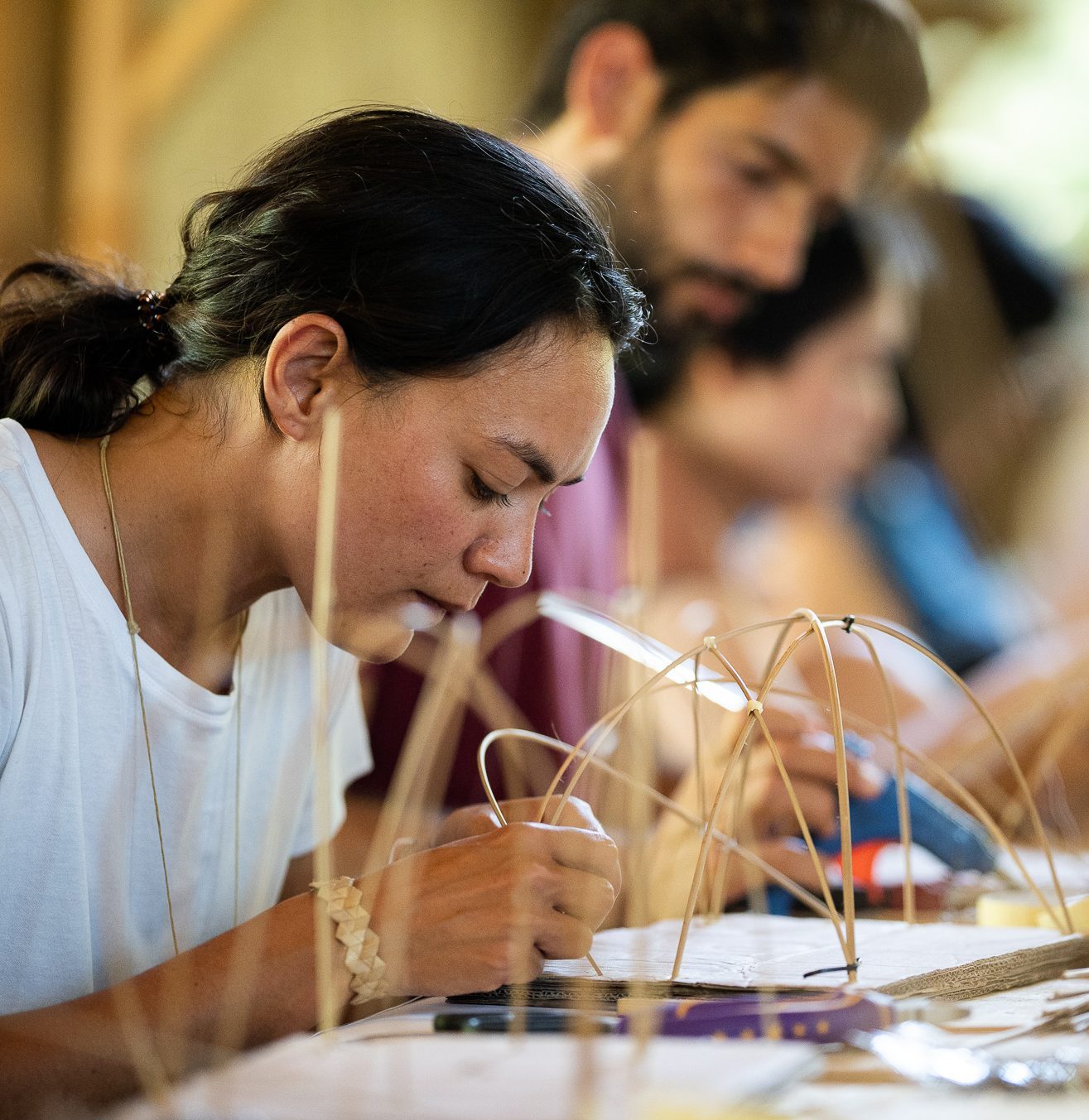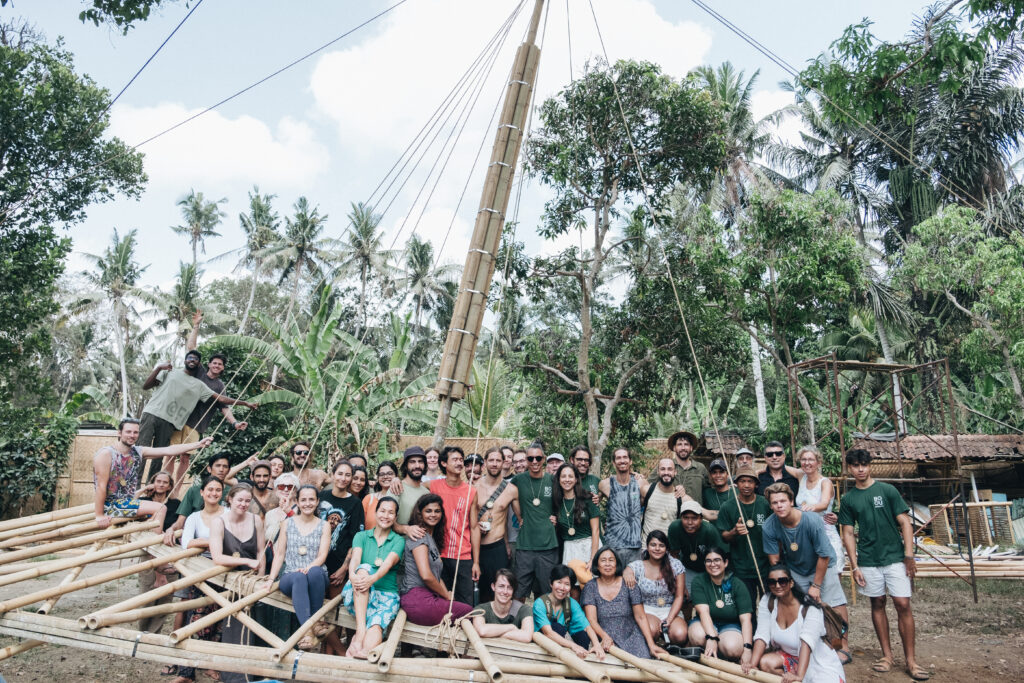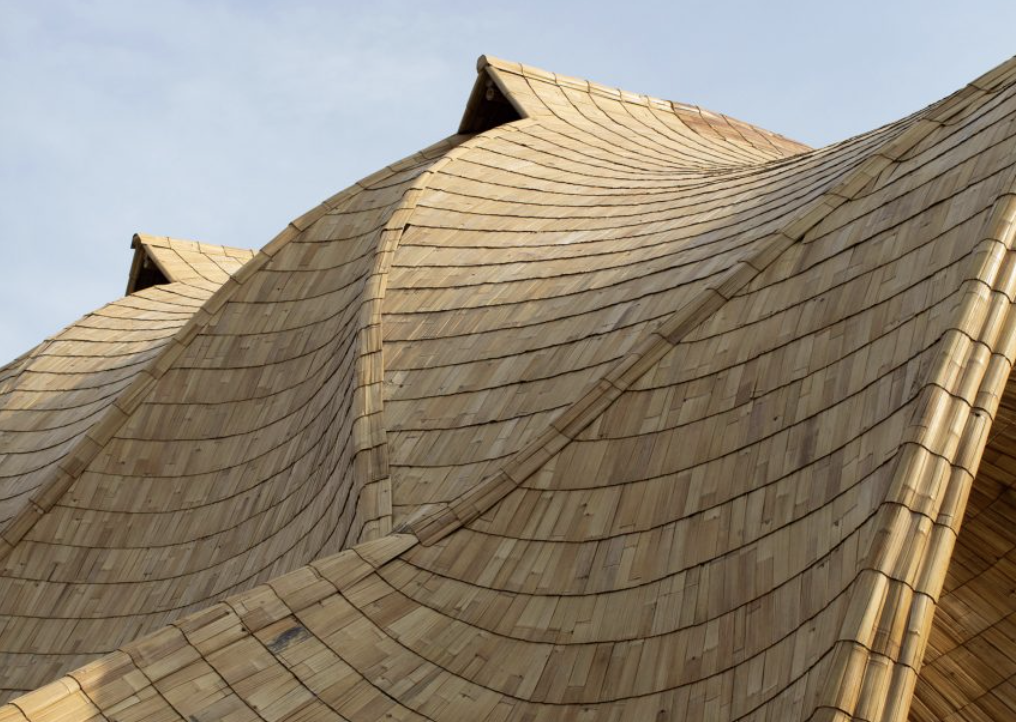The 3 Stages For Turning Bamboo Into A Reliable Construction Material
By Maria Farrugia & Sai Goutham | March 19, 2022 | Construction - Processing - Forestry -

Preparing your bamboo is key to building a long-lasting bamboo structure. Along with treating your bamboo, there are another two important steps to consider that will ensure the durability of your bamboo buildings.
In this article, we share the three stages to follow when preparing your bamboo, before using it as a construction material. These 3 stages include:
- Selecting high quality poles
- Treating bamboo with borax
- Properly drying the bamboo
1. Selecting High Quality Poles
Selecting and harvesting high-quality mature poles is the first step towards the process of treatment. A bamboo culm takes 3-4 years to reach maturity and this is when it is ready to harvest. At the different stages of growth, bamboo contains different sugar levels and different structural properties. Mature culms have stabilized sugar levels and enough strength needed for construction. Once the bamboo is harvested, it needs to be treated as soon as possible because the preservability of the bamboo decreases with time after harvest.
To learn more about bamboo harvesting read our Go to Guide on Harvesting Bamboo Sustainably.
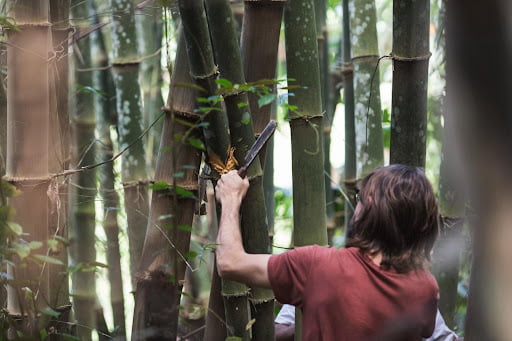
2. Treating bamboo with borax
Quality treatment is the second stage of the treatment process. It is very important to clear the sugars completely from the bamboo to make it resistant against termites, insects and fungal attacks. There are many treatment techniques to treat bamboo, but the most reliable treatment technique is treating bamboo with borates.
There are different methods to insert borates into bamboo tissues. In our experience, submerging bamboo into the borate solution, called full immersion or soak immersion, is the most reliable method. This system is not very complicated to install, it is very useful to treat bamboo for large-scale construction purposes and it doesn’t affect the bamboo’s structural properties and strength.
Full Immersion
Full immersion or soak immersion is a good system for treating larger quantities of bamboo regularly. It is accomplished by putting the entire pole in a treatment solution. With the full immersion technique, bamboo must be fully submerged in a tank making sure the solution soaks into the bamboo tissues completely.
Before the bamboo poles are put into the tank all the nodes of the bamboo must be pierced. To do this we drill small holes on the culm walls near the nodes or run a metal pole through the entire pole breaking all the internal inter-nodes. This allows the solution to enter the inside of the bamboo easily.


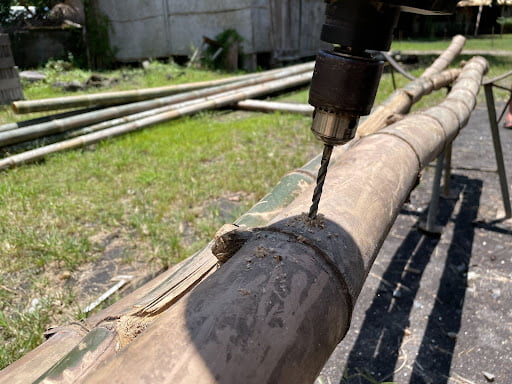
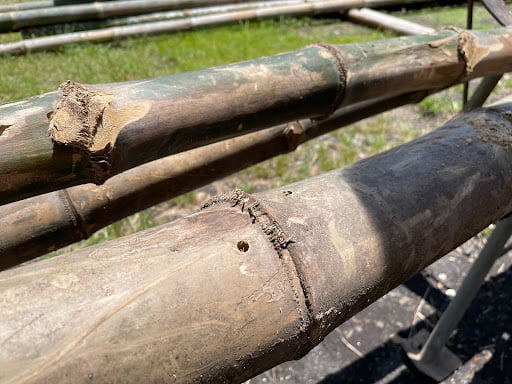
There are two different ways of treating your poles with the full soak immersion technique. Either cold soak or hot soak.
Cold soak Immersion
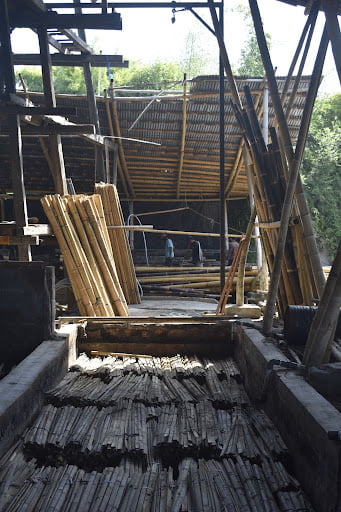
Hot soak Immersion
Hot soak immersion needs an open tank system that is raised from the ground to make an accessible fireplace underneath the tank. The heat helps to encourage the borates to enter the bamboo's woody mass faster. Bamboo needs to soak for around 24 hours with a constant heating temperature of approximately 60 degrees Celsius. It is also possible to treat bamboo in just 8hrs with a constant heating temperature of 100 degrees Celsius. Timing may also differ depending on the type of bamboo you are treating.

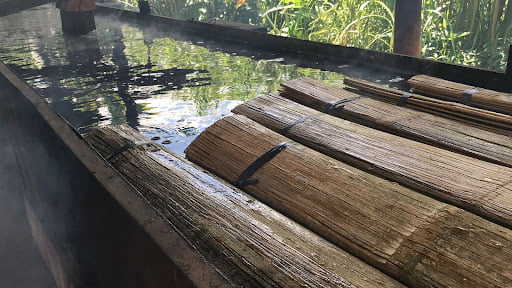
It is advisable to use a borax/boric acid solution of 5-6% concentration in this system. Within the 5%, 3% should be borax and 2% should be boric acid to 95% of freshwater for both hot and cold soak immersion.
In a large-scale treatment facility with proper monitoring and control of borax and boric acid levels in the solution can be reused over and over again, by simply adding more water and chemicals to the tanks as needed thus reducing waste and lowering costs.
3. Properly drying the bamboo
Drying is the final stage of the treatment process before bamboo can be used for construction. Drying bamboo is critical because when bamboo starts drying it will shrink and if it is not taken care of then it tends to have uneven shrinkage resulting in cracking and degrading its strength. Also if it is not dried properly it leads to mold.
Once the bamboo is treated properly, it needs to be taken out from the tank and the outer surface of the bamboo (the silica) needs to be washed with water using a high-pressure cleaner to clean the surface because the combination of the salt crystals and the sun can create cracks in the silica and the culm wall. And also it helps to take off any lichens, dust, and slime over it before it is taken to drying.

The best way to dry bamboo faster is to dry it under the sun initially until the green color begins to change to yellow. You can do this by stacking your bamboo vertically using a simple tripod. Bamboo which is vertically stacked dries twice as fast as horizontally stacked bamboo.
Species like Dendrocalamus asper and Bambusa blumeana which have thicker wall sections, are dried under the sun for a week, whereas. species that have thinner wall sections are dried under the sun for 2-3 days.
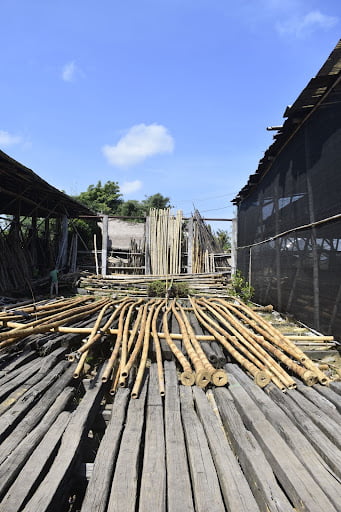

After this period bamboos are moved under a shade (dry storage area) protecting them from moisture and sun, for 6 - 12 weeks according to weather conditions allowing them to dry properly. Once the bamboo reaches less than 18% moisture content, it can be used for construction.
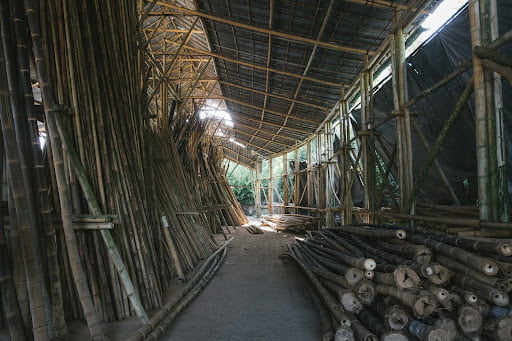

Taking care of these 3 important steps in the treatment process, will ensure producing the best quality bamboo in terms of strength and durability for construction.

Maria is the Bamboo U Director and Sai Goutham is the Research & Development Manager. Together they formulate ideas, write content and create illustrations to share knowledge of bamboo architecture and design.
June 7-18, 2024
The 11 Day Bamboo Build & Design Course in Bali
In 11 days, we'll show you how to build bamboo structures we’ll share all that it takes to build with nature.
April 26, 2024
The Fundamentals of Building with Bamboo Online Course
All the fundamentals you need to get you started working with bamboo. Deep dive into cinematic videos and step-by-step guides that will provide you with a strong understanding of bamboo as a design and building material.











